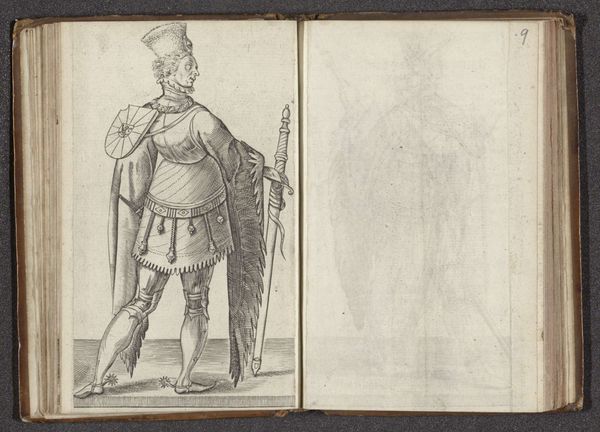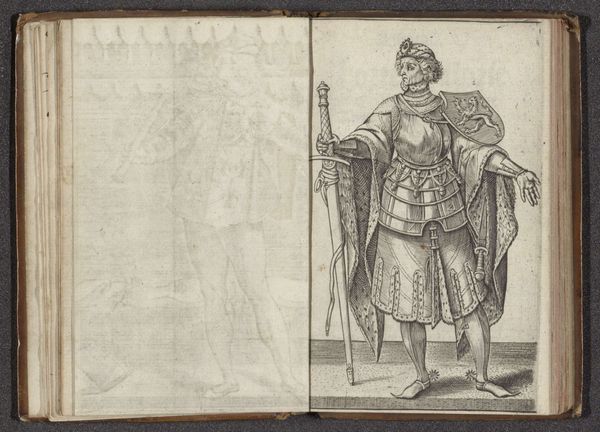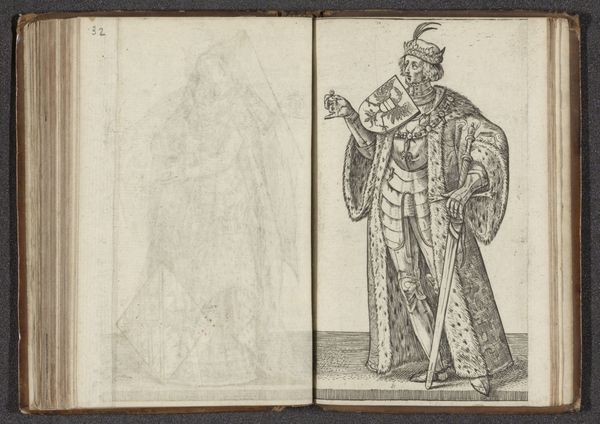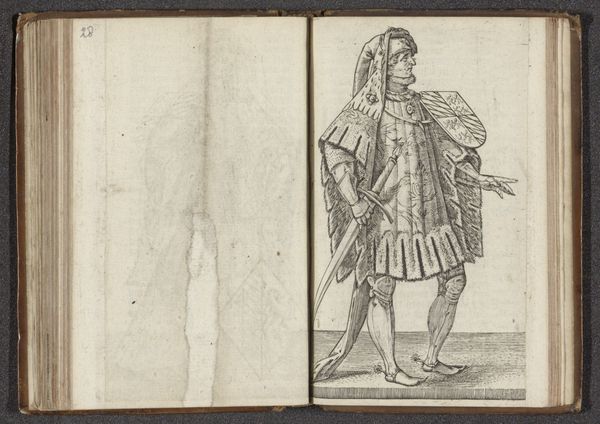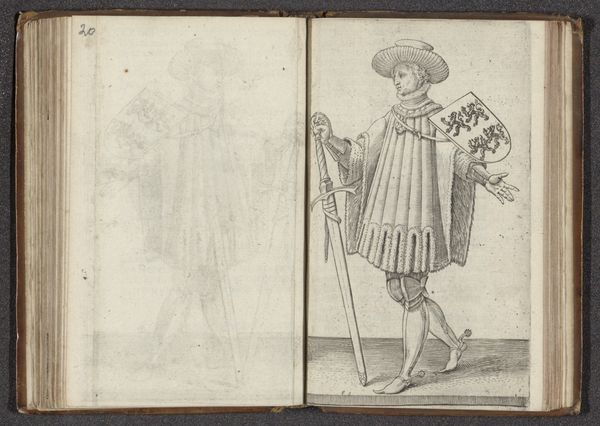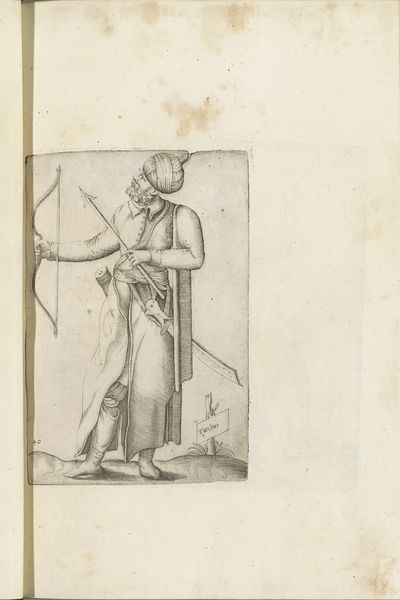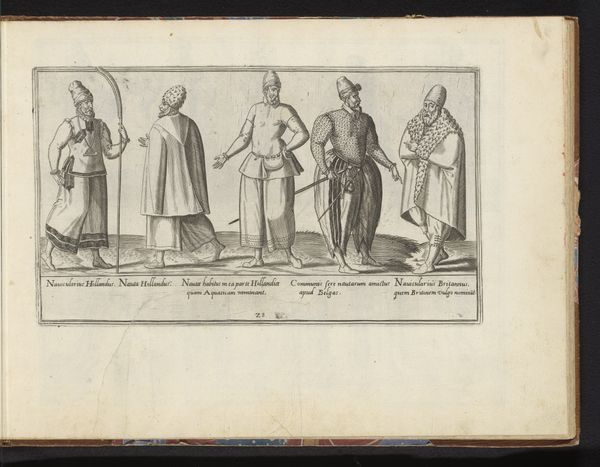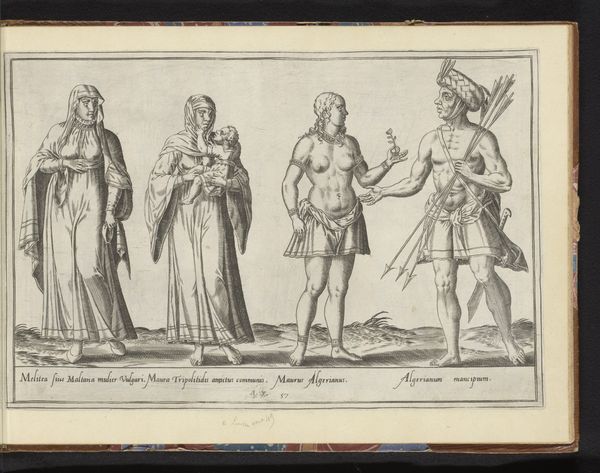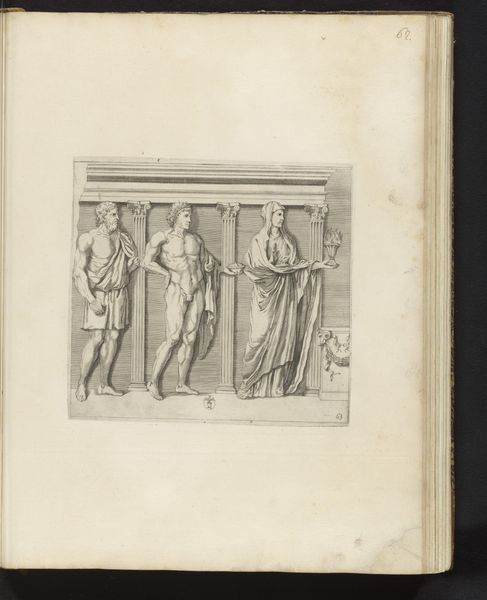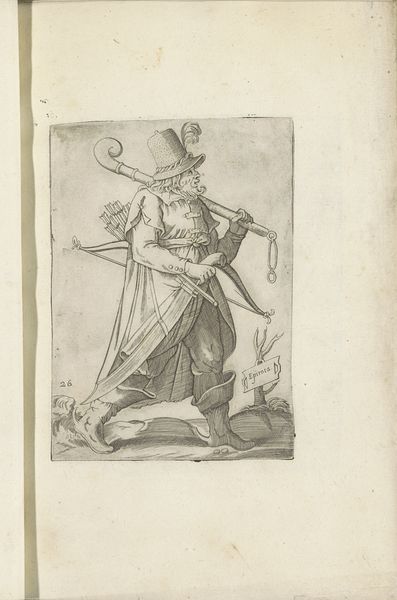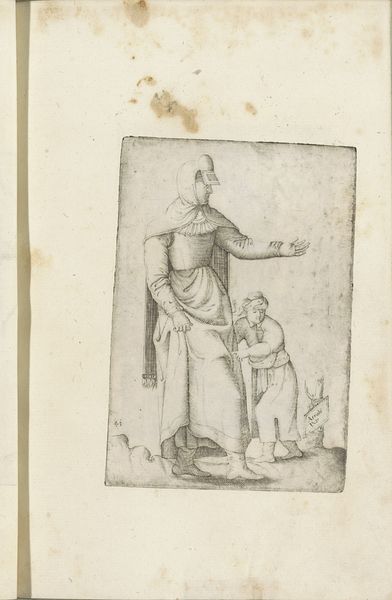
drawing, paper, engraving
#
portrait
#
drawing
#
mannerism
#
figuration
#
paper
#
line
#
history-painting
#
academic-art
#
engraving
Dimensions: height 135 mm, width 85 mm
Copyright: Rijks Museum: Open Domain
Curator: Look at the stark, almost haunting, depiction of Graaf Willem I van Holland. Hendrick Goltzius captured this historical figure through drawing and engraving sometime between 1586 and 1587. The piece is currently housed here at the Rijksmuseum. Editor: It strikes me as rather formal and linear, with meticulous attention given to detail in the armor and drapery. The precision in the lines gives it a graphic quality. There is another barely there image to its left. Why do you think that is? Curator: Indeed. I see this as a strategic representation of power. It's less about portraying a lifelike representation of William I, but instead utilizing formal devices to convey a particular constructed image of leadership and strength in relation to gender roles of the time. William wasn’t king until posthumously. How might the image serve to further his lineage’s claim to power? It can be argued that gender informs leadership. Editor: It also looks like Goltzius has paid close attention to light and shadow to give it depth. This is something we see echoed throughout other pieces done at the time. The contrast contributes significantly to the dramatic feel of the figure, who looks severe yet distant, almost as if suspended between two dimensions. The lines give way to shapes in a geometric dance to convey realism and regality. Curator: And don't overlook the significance of the figure himself! Here we are presented with an early figure of the House of Orange, who fought for the lowlands’ independence from Spanish control in the late 16th century. Remember, the Protestant Reformation redefined notions of legitimacy of power, which reframes how to represent said power through art. He became a symbol of resistance. What’s your take on it all? Editor: My interpretation focuses on Goltzius' skill in rendering textures through line work, capturing the reflective surfaces of the armor, the plushness of the robe. Its construction yields much consideration regarding form in totality. Curator: Right. Seeing art in a broader social-historical framework means acknowledging its role in legitimizing certain power structures or challenging societal expectations during turbulent periods of political and religious upheaval. Editor: Focusing on the pure form gives insight into the overall style, however. Curator: Of course. Each perspective highlights unique ways that art from this period remains potent. Editor: It allows viewers to analyze not only artistic intention, but its contribution to sociopolitical movements throughout time.
Comments
No comments
Be the first to comment and join the conversation on the ultimate creative platform.
